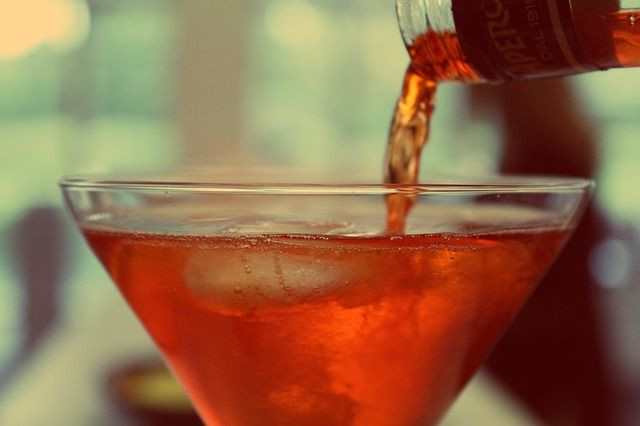Alcoholic Drinks, No Matter How Many Calories They Have, Can Still Impede Weight Loss

It’s no secret that alcohol is often the greatest nemesis to the waistline — and since many alcoholic drinks are high in “empty calories” lacking any nutritional value, it’s no wonder why. This leaves many people reaching for a light beer or a Skinnygirl cocktail®. While lower on calories, these can still throw a wrench into your diet plans.
How The Body Processes Alcohol
Those empty calories alcohol contains supply the body with no nutritional value. You’re better off eating a cheeseburger, which has macronutrients like proteins and fats. Not only are they void of nutrition, these types of calories can make it easy to up your overall caloric intake.
What’s more, “[alcohol] reduces the ability of the body to burn fat,” Marc Perry, CEO of BuiltLean, a personal training and nutrition counseling practice, told Medical Daily.
Your body views alcohol like the toxin it is. According to a 1999 study from the Universities of California at Berkeley and San Francisco, the liver quickly converts alcohol into acetate, the chemical most commonly found in vinegar, and releases it into the bloodstream. This process inhibits the metabolic system.
So, when an alcoholic beverage is consumed alongside a calorie-heavy meal, the liver — which plays an important role in fat digestion — prioritizes getting rid of the “poison” first, leaving the meal laden with carbs, proteins and fats in the stomach.This delays the fat-burning process, contributing to more fat storage. If you think a slow metabolism is hard on body weight, imagine how much worse a stalled one can be.
"Drinking presses 'pause' on your metabolism, shoves away the other calories, and says, 'break me down first!'" physician and scientist Dr. Pamela M. Peeke, told Health Magazine. "Research has uncovered that alcohol especially decreases fat burn in the belly.”
Low-Calorie Drinks
In theory, low-calorie drinks are healthier alternatives to high-calorie drinks. And, depending on how they are consumed, they can be. Low-calorie drinks obviously contain fewer empty calories, and that’s always a good thing, however, they can still wreak havoc on the waistline.
“A drink with less calories … is better than the same drink with more calories,” Perry explained. “But alcohol does have the same effect.” Low-calorie alcoholic drinks are still alcoholic drinks and the metabolic system will stop what it’s doing to deal with these drinks accordingly. Whether an alcoholic drink is high or low in calories, the postponement of the metabolic system is inevitable.
So, one’s best bet for maintaining their waistline is to cut alcohol out completely — especially since reports have linked alcohol consumption to overeating. Luckily, it’s not that difficult to mitigate the effects imbibing can have on the waistline. For starters, it’s important to drink in moderation and not go overboard. The more alcohol is consumed, the longer the metabolic system is stalled.
It’s also important to eat a healthy meal or small snack packed with protein, fiber and good fat before consuming alcohol — as opposed to eating less to make more room for the alcohol, a knee-jerk reaction some people have to news like this, according to Health Magazine. That way the body will have already started metabolizing the food before the alcohol comes into play. These small tweaks could help minimize the “diet–damaging” effects of drinking alcohol.



























